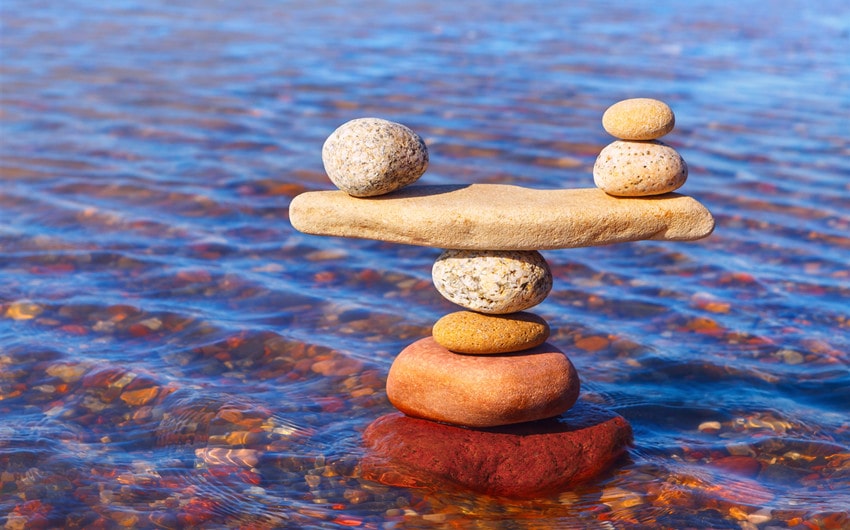Redefining Balance: Why It’s Not About Doing Everything at Once
When most people hear the word balance, they picture a perfectly even scale — work and rest in harmony, emotions steady, priorities perfectly aligned. It sounds peaceful. It also sounds impossible.
We talk about balance as if it’s something we can finally achieve once everything else falls into place — once we find the right routine, the right habits, the right mindset. But the truth is, balance isn’t a destination. It’s a daily decision.
It’s not about doing everything at once or doing it all well. It’s about learning to adjust — to lean, to pause, to shift your weight when life pulls in different directions.
Real balance is alive. It moves with you.
The Myth of Perfect Balance
The modern world loves the idea of balance, but often sells it as another form of control — a way to “hack” your life, optimize your energy, and make every part of your day equally productive.
But that kind of balance is exhausting. It’s built on the illusion that peace comes from precision — from holding everything perfectly still.
In real life, balance looks messier. Some days, it’s a healthy meal and a clean kitchen. Other days, it’s takeout and going to bed early. Sometimes balance means saying yes. Sometimes it means saying no and letting the dishes wait.
Perfect balance doesn’t exist. But your balance does — and it changes all the time.
Balance as a Practice, Not a Goal
Balance isn’t something we find once and keep. It’s something we practice.
Every day, we make small choices — what to say yes to, what to let go of, how to respond to what the day brings. Those choices create our balance, moment by moment.
Some days you’ll get it right. Some days you won’t. The point isn’t perfection; it’s awareness.
When you think of balance as a practice, you start to soften your expectations. You stop trying to “achieve” it and start learning to feel it.
And that shift — from control to connection — changes everything.
Listening Instead of Forcing
So much of finding balance begins with listening — not to what the world tells you to do, but to what your body, your energy, and your emotions are trying to say.
When you’re out of balance, you usually know. You feel it — in the tightness of your chest, the tension in your shoulders, the sense that you’re running without direction.
But instead of pausing, we tend to push harder. We add more structure, more effort, more noise.
True balance doesn’t come from forcing yourself into alignment. It comes from listening to what needs care and responding with compassion.
Sometimes balance means slowing down, not speeding up.
The Fluid Nature of Balance
Balance isn’t static. It’s seasonal.
There will be times when your work demands more of you — and others when rest takes priority. There will be seasons of giving, seasons of growing, and seasons of quiet recovery.
The key is learning to move with those shifts instead of resisting them.
Think of a tightrope walker. They don’t stay still — they constantly adjust. Tiny shifts keep them centered. That’s what real balance looks like: movement, awareness, small corrections made with grace.
You’re not supposed to feel balanced all the time. You’re meant to notice when you’re not — and realign with care.
The Comparison Trap
Nothing throws off balance faster than comparison.
When we start measuring our lives against someone else’s — their routines, their milestones, their calm exterior — we lose touch with our own rhythm.
Balance is deeply personal. What grounds one person might overwhelm another. What feels steady today might feel impossible next week.
You can’t find balance by imitating someone else’s version of it. You find it by learning to trust yourself.
Let go of the idea that balance has to look a certain way. It only has to feel like yours.
The Weight of “Should”
One of the biggest barriers to balance is the word “should.”
I should be more productive.
I should be exercising.
I should spend more time with family.
I should meditate every morning.
“Should” keeps us stuck between guilt and exhaustion. It replaces self-awareness with self-criticism.
Choosing balance means noticing when “should” shows up and replacing it with something gentler: What do I need right now?
Maybe you need movement. Maybe you need rest. Maybe you just need a few quiet minutes of doing nothing.
Listening to that inner voice — and trusting it — is one of the most powerful steps toward living in balance.
Small Ways to Choose Balance Every Day
Balance doesn’t come from grand life overhauls. It’s built in the small, ordinary choices that add up over time.
Here are a few gentle ways to start choosing balance today:
1. Create morning moments, not routines.
Instead of trying to perfect your morning schedule, focus on one or two small things that help you feel grounded — maybe a stretch, a quiet cup of coffee, or a few minutes of sunlight.
2. Protect your boundaries without guilt.
Balance requires space. Learn to say no without apologizing, and remember that rest isn’t selfish — it’s essential.
3. Check in with yourself often.
Pause throughout the day and ask: How do I feel right now? What needs attention? Awareness is the foundation of balance.
4. Simplify when life feels heavy.
If everything feels like too much, it probably is. Lighten your load — physically, mentally, emotionally. Let go of what doesn’t serve this season.
5. Celebrate small wins.
Balance isn’t found in big achievements — it’s found in the moments you choose yourself, your peace, your truth, even briefly.
Each small act of awareness is a vote for the life you want to live.
The Permission to Shift
One of the most freeing parts of choosing balance is giving yourself permission to change.
What feels balanced now might not feel balanced six months from now — and that’s okay. You’re allowed to evolve. You’re allowed to outgrow what once worked.
Balance isn’t about consistency; it’s about honesty. It’s the courage to keep asking yourself, What feels right today? and adjusting as you go.
You don’t lose balance when you shift. You find it again.
Letting Go of the All-or-Nothing
Perfectionism and balance don’t mix.
You can’t build peace from pressure. You can’t create harmony while holding yourself to impossible standards.
Choosing balance means releasing the all-or-nothing mindset — the idea that you’re either thriving or failing, grounded or lost.
There’s a middle ground, and that’s where real life happens.
You can be both tired and grateful. You can rest without guilt. You can move forward slowly and still be growing.
Balance doesn’t erase the chaos — it gives you a way to stand steady within it.
The Beauty of the Middle
We spend so much of life chasing extremes — more success, more calm, more everything. But balance lives in the middle.
It’s quiet there, and sometimes that quiet feels unfamiliar. But that’s where the beauty is — in the small, steady hum of a life that feels like your own.
The middle isn’t mediocre. It’s peaceful. It’s where things feel right-sized again — where effort and ease can coexist.
Choosing balance is choosing to live in that space — not perfectly, but presently.
Closing Thoughts
Balance isn’t something you master once. It’s something you wake up and choose again and again.
Some days it will feel effortless. Other days it will feel like work. But every time you pause long enough to listen to yourself — to realign instead of react — you’re already living in balance.
So stop chasing perfection. Stop trying to hold everything still. Let life move, and move with it.
Because balance isn’t about control — it’s about trust. It’s about choosing what matters and letting the rest go.
And the more you practice that choice, the lighter life begins to feel.

